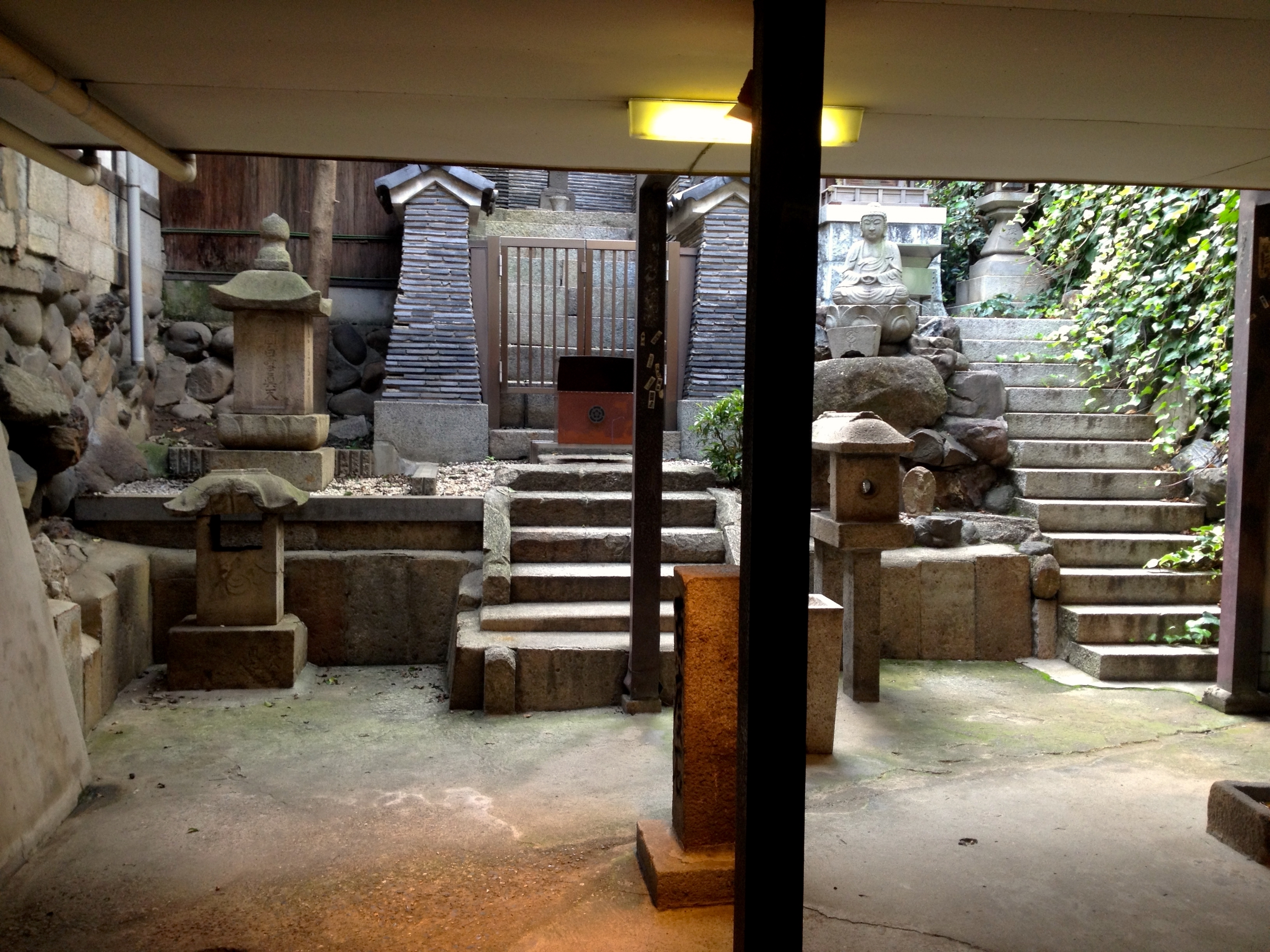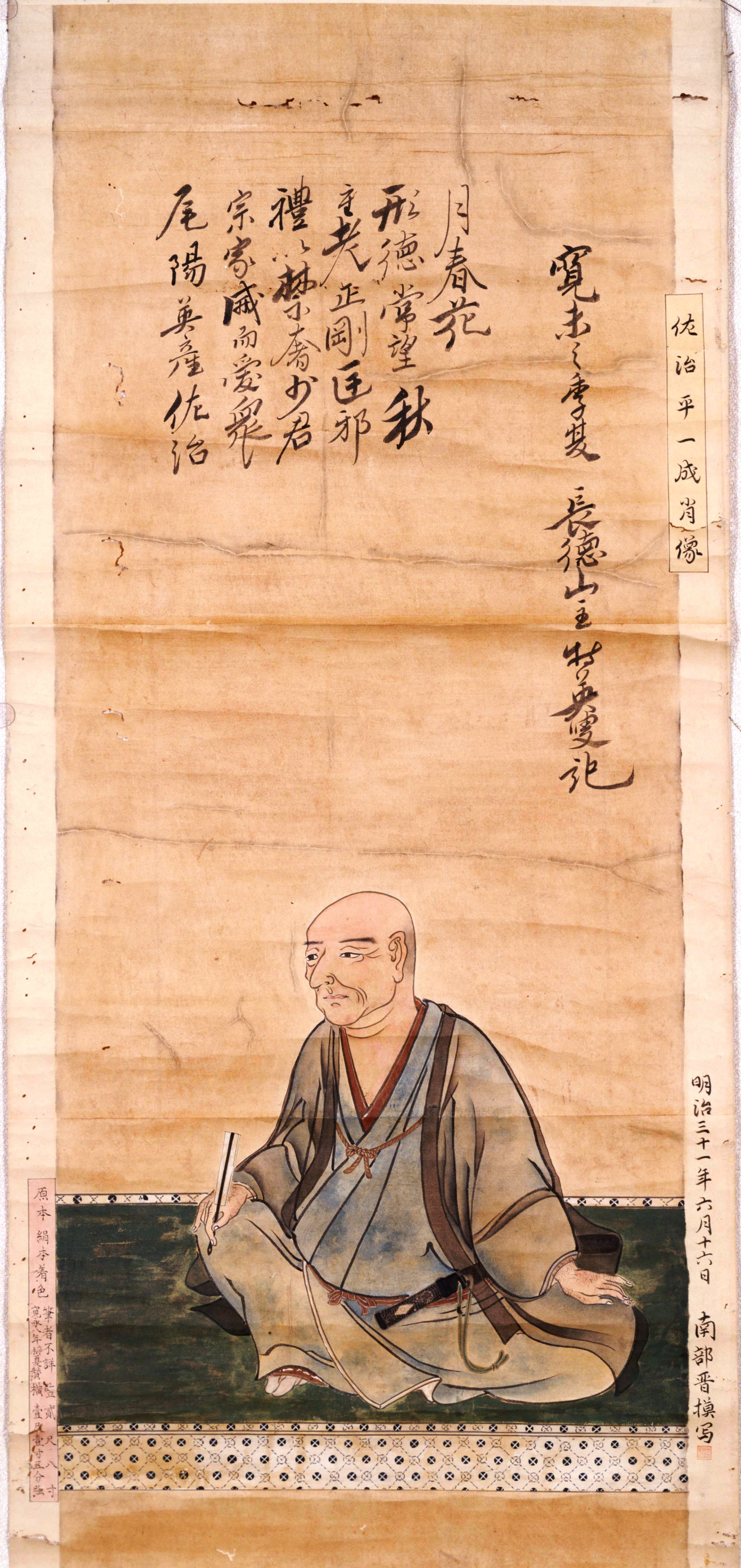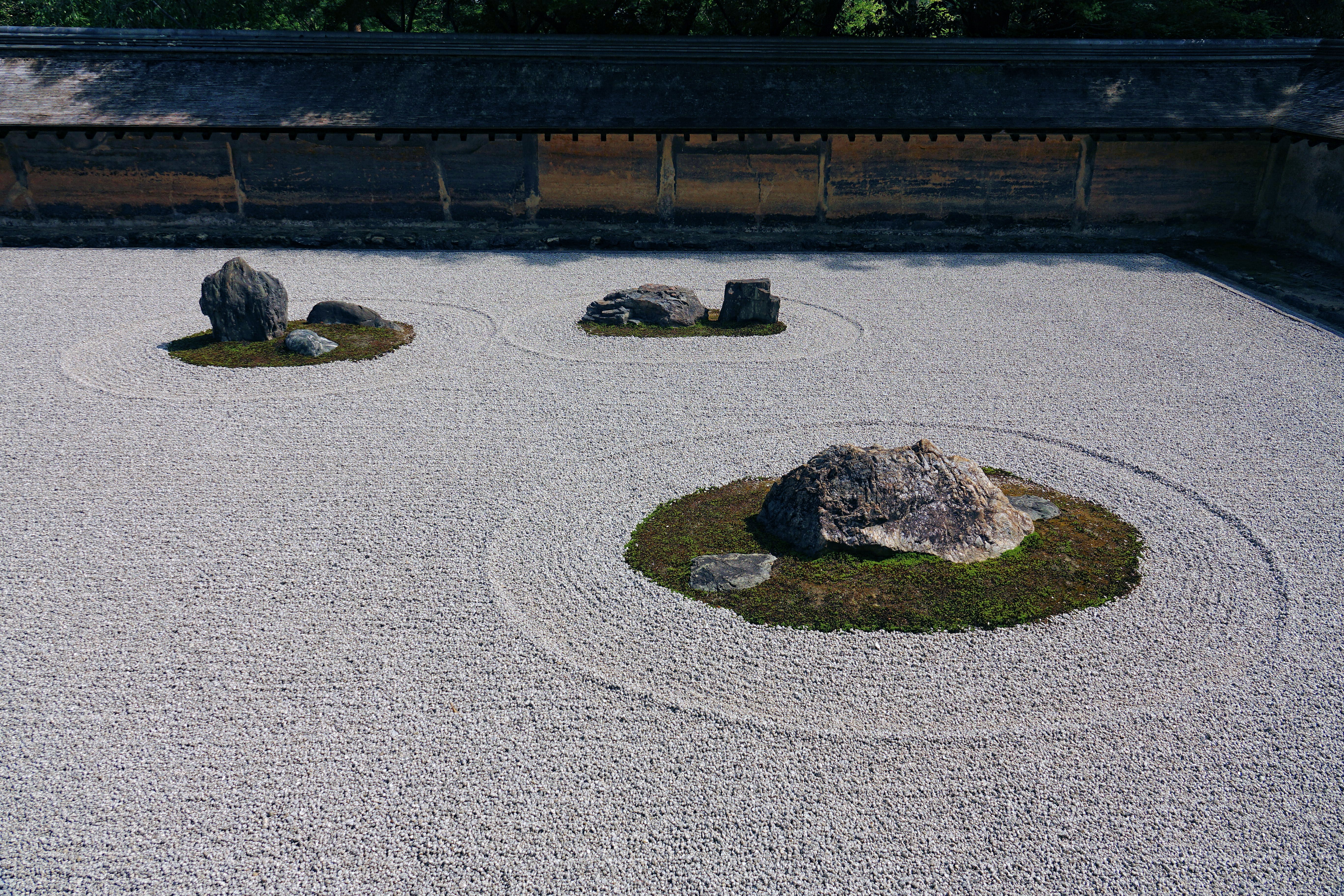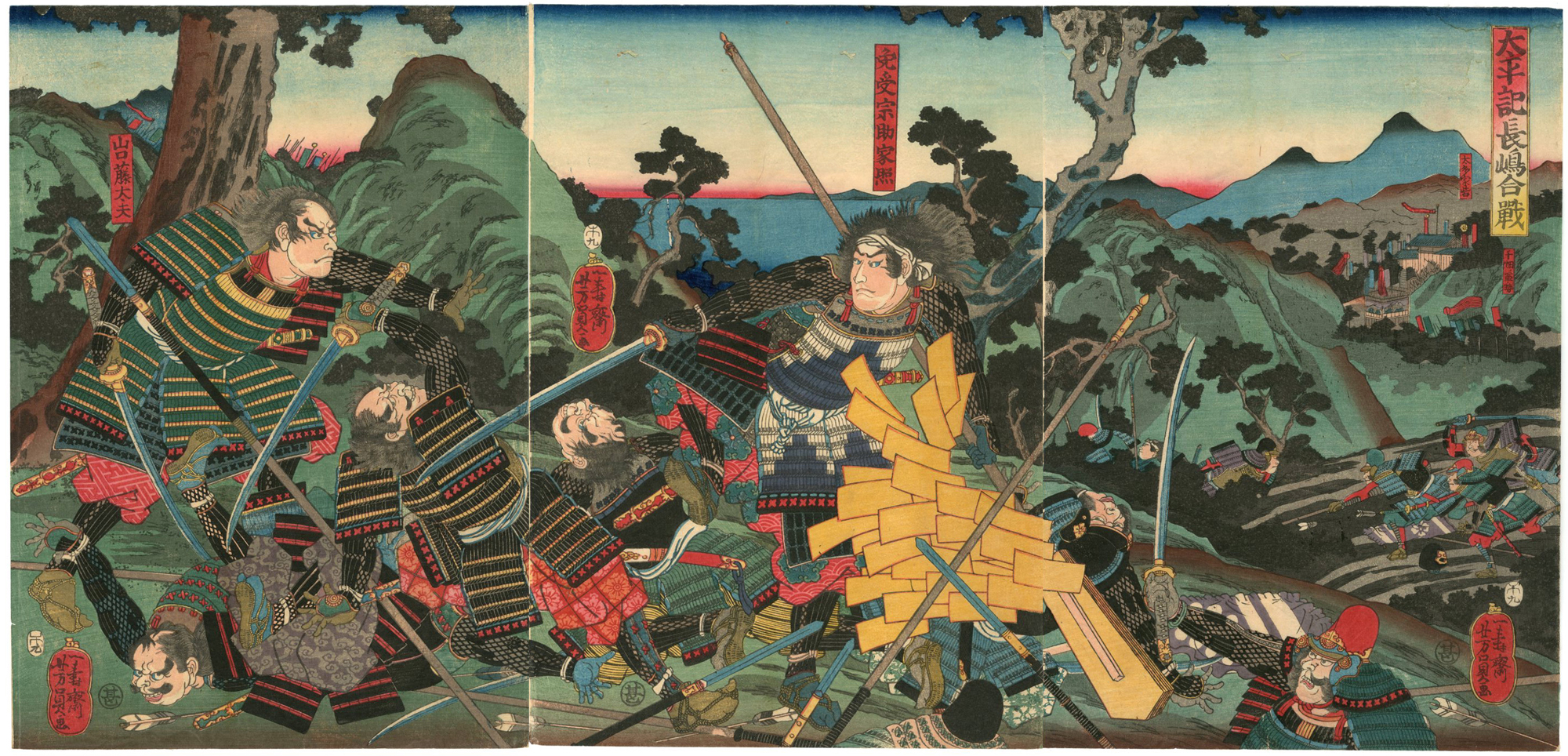|
Oinu
Oinu (お犬, died September 24, 1582) was a Japanese historical figure and a member of the prominent Oda clan in the Sengoku period. She was the daughter of Oda Nobuhide and the younger sister of Oda Nogunaga, one of the leading figures of the Sengoku period Japan. She is commonly known as Oinu no Kata (お犬の方), "no Kata" indicating her status as an official wife. Life Oinu was the eighth daughter of daimyo Oda Nobuhide. She was the younger sister of Oda Nobunaga and the elder sister of Oichi. Oinu initially married Saji Nobukata, Lord of Ōno Castle, who ruled the western part of Chita in Owari Province. The two had two children, Saji Kazunari and Nakagawa Hideyasu. In 1574, Nobukata was killed in battle during the Sieges of Nagashima, and Oinu returned to her parents' home. She went to live at the Gifu Castle, the residence of her elder brother Nobunaga. She was introduced to Lord of Makishima Castle Hosokawa Akimoto, the eldest son of Deputy Shogun Hosokawa Ha ... [...More Info...] [...Related Items...] OR: [Wikipedia] [Google] [Baidu] |
Oichi
was a female historical figure in the late Sengoku period. She is known primarily as the mother of three daughters who became prominent figures in their own right – Yodo-dono, Ohatsu Nagamasa had no hope of winning, and chose to commit seppuku. Oichi and her daughters remained in the Oda family's care for the next decade. After Nobunaga was assassinated in 1582, his sons and vassals broke into two major factions, led by two of Nobunaga's favored generals, Shibata Katsuie and Hideyoshi. Nobunaga's third son, Nobutaka, belonged to the former group, and arranged for his aunt Oichi to marry Katsuie in order to ensure his loyalty to the Oda clan. But in 1583, Katsuie was defeated by Hideyoshi in the Battle of Shizugatake, forcing him to retreat to his home at Kitanosho Castle. As Hideyoshi's army lay siege to the castle, Katsuie implored Oichi to flee with her daughters and seek Hideyoshi's protection. Oichi refused, insisting on dying with her husband after their daughters were s ... [...More Info...] [...Related Items...] OR: [Wikipedia] [Google] [Baidu] |
Oda Nobunaga
was a Japanese ''daimyō'' and one of the leading figures of the Sengoku period. He is regarded as the first "Great Unifier" of Japan. Nobunaga was head of the very powerful Oda clan, and launched a war against other ''daimyō'' to unify Japan in the 1560s. Nobunaga emerged as the most powerful ''daimyō'', overthrowing the nominally ruling shogun Ashikaga Yoshiaki and dissolving the Ashikaga Shogunate in 1573. He conquered most of Honshu island by 1580, and defeated the ''Ikkō-ikki'' rebels in the 1580s. Nobunaga's rule was noted for innovative military tactics, fostering of free trade, reforms of Japan's civil government, and the start of the Momoyama historical art period, but also for the brutal suppression of those who refused to cooperate or yield to his demands. Nobunaga was killed in the Honnō-ji Incident in 1582, when his retainer Akechi Mitsuhide ambushed him in Kyoto and forced him to commit . Nobunaga was succeeded by Toyotomi Hideyoshi, who along with Toku ... [...More Info...] [...Related Items...] OR: [Wikipedia] [Google] [Baidu] |
Oda Nobuhide
was a Japanese ''daimyō'' and magistrate of the Sengoku period known as "Tiger of Owari" and also the father of Oda Nobunaga the first "Great Unifier" of Japan. Nobuhide was a deputy ''shugo'' (Shugodai) of lower Owari Province and head of the Oda clan which controlled most of Owari. Biography Oda Nobuhide was born in 1510 in Owari Province, the eldest son of Oda Nobusada, the head of the Oda clan and a ''shugodai'' (deputy ''shugo'') of the lower Owari area. Nobuhide became head of the Oda clan when Nobusada died in 1538, and became involved in open warfare as he was confronted to the north by Saitō Dōsan, the ''daimyō'' of Mino Province, and to the east by Imagawa Yoshimoto, the ''daimyō'' of Mikawa, Suruga, and Tōtōmi provinces. In 1540, Nobuhide attacked and took Anjō castle, which was held by the Matsudaira clan. He was assisted by Mizuno Tadamasa, his son, Oda Nobuhiro, was installed as the lord of the castle. In 1542 he defeated Imagawa Yoshimoto at First ... [...More Info...] [...Related Items...] OR: [Wikipedia] [Google] [Baidu] |
Saji Kazunari
was a Japanese samurai warrior of the Sengoku period and Edo period. Turnbull, Stephen R. (2000)''The Samurai Tradition,'' Vol. 2, p. 149 excerpt, "Hideyoshi married Oeyo the younger sister of Yodo-Dono his chief concubine to Saji Kazunari, warden of a castle in a province under his control, but he took her back when her husband assisted Ieyasu, with whom he was then at war." Family * Father: Saji Nobukata * Mother: Oinu, sister of Oda Nobunaga * Wives: ** Oeyo (m.1583, div.1592) ** Oushin daughter of Oda Nobunaga * Children: ** Kitahime ** Nuihime ** Saji Tamenari Career He was warden of a castle in a province under the control of Toyotomi Hideyoshi. Hideyoshi caused Kazunari to marry Oeyo, the sister of a favorite concubine. When Kazunari's support for Tokugawa Ieyasu became known, Hideyoshi took back the woman. She later married Ieyasu's son Tokugawa Hidetada and mothered the shōgun Tokugawa Iemitsu. In popular culture Saji is played by Takehiro Hira in the NHK , al ... [...More Info...] [...Related Items...] OR: [Wikipedia] [Google] [Baidu] |
Ryōan-ji
Ryōan-ji ( ja, 竜安寺, label=Shinjitai, ja, 龍安寺, label=Kyūjitai, ''The Temple of the Dragon at Peace'') is a Zen temple located in northwest Kyoto, Japan. It belongs to the Myōshin-ji school of the Rinzai branch of Zen Buddhism. The Ryōan-ji garden is considered one of the finest surviving examples of ''kare-sansui'' ("dry landscape"), a refined type of Japanese Zen temple garden design generally featuring distinctive larger rock formations arranged amidst a sweep of smooth pebbles (small, carefully selected polished river rocks) raked into linear patterns that facilitate meditation. The temple and its gardens are listed as one of the Historic Monuments of Ancient Kyoto, and as a UNESCO World Heritage Site. History The site of the temple was an estate of the Fujiwara clan in the 11th century. The first temple, the ''Daiju-in'', and the still existing large pond were built in that century by Fujiwara Saneyoshi. In 1450, Hosokawa Katsumoto, another powerful warlord, ... [...More Info...] [...Related Items...] OR: [Wikipedia] [Google] [Baidu] |
Toyotomi Hideyoshi
, otherwise known as and , was a Japanese samurai and ''daimyō'' (feudal lord) of the late Sengoku period regarded as the second "Great Unifier" of Japan.Richard Holmes, The World Atlas of Warfare: Military Innovations that Changed the Course of History, Viking Press 1988. p. 68. Hideyoshi rose from a peasant background as a Affinity (medieval), retainer of the prominent lord Oda Nobunaga to become one of the most powerful men in Japan. Hideyoshi succeeded Nobunaga after the Honnō-ji Incident in 1582 and continued Nobunaga's campaign to unite Japan that led to the closing of the Sengoku period. Hideyoshi became the ''de facto'' leader of Japan and acquired the prestigious positions of Daijō-daijin, Chancellor of the Realm and Sesshō and Kampaku, Imperial Regent by the mid-1580s. Hideyoshi launched the Japanese invasions of Korea (1592–1598), Japanese invasions of Korea in 1592 to initial success, but eventual military stalemate damaged his prestige before his death in 1 ... [...More Info...] [...Related Items...] OR: [Wikipedia] [Google] [Baidu] |
Makishima Castle
Makishima (written: 巻島 or 牧島) is a Japanese surname. Notable people with the surname include: * (born 1976), Japanese politician Fictional characters: * Shogo Makishima, the main antagonist in ''Psycho-Pass'' *Agito Makishima, a major character in ''Bio Booster Armor Guyver is a Japanese manga series written and illustrated by Yoshiki Takaya. The Guyver itself is a symbiosis, symbiotic techno-organic (or Biomechanical engineering, biomechanical) device that Human enhancement, enhances the capabilities of its h ...'' {{surname, Makishima Japanese-language surnames ... [...More Info...] [...Related Items...] OR: [Wikipedia] [Google] [Baidu] |
Kanrei
or, more rarely, ''kanryō'', was a high political post in feudal Japan; it is usually translated as ''shōguns deputy''. After 1349, there were actually two ''Kanrei'', the ''Kyoto Kanrei'' and the ''Kantō Kanrei''. Originally, from 1219 until 1333, the post was synonymous with the ''Rokuhara Tandai'', and was based in Kyoto. The Hōjō clan monopolized this post, and there were during this period two Deputies – a southern chief, and a northern chief. From 1336 to 1367, the Deputy was called . The first to hold this title was Kō no Moronao. In 1367, Hosokawa Yoriyuki was chosen by a council to become Deputy (Kyoto ''Kanrei''). In order to ensure the loyalty of his colleagues, the Hatakeyama and Shiba clans, he proposed that three families share the position of ''Kanrei'', alternating between them every time a new appointment was needed. Thus was born the ''San-Kan'' or Three ''Kanrei''. However, in 1379, Yoriyuki's actions attracted the resentment of certain powerful lords, ... [...More Info...] [...Related Items...] OR: [Wikipedia] [Google] [Baidu] |
Hosokawa Harumoto
was a Japanese ''daimyō'' of the Muromachi and Sengoku periods, and the head of the Hosokawa clan. Harumoto's childhood name was Sōmei-maru (聡明丸). He was born to Hosokawa Sumimoto, another renowned samurai of the Muromachi era. Early life Harumoto succeeded to a house at the age of seven, after his father's death in 1520. While still a minor, he was supported by his caretaker Miyoshi Motonaga. His childhood name was Rokurō (). Shogun Deputy (''Kanrei'') In 1531, Harumoto defeated Hosokawa Takakuni, and regained the power. In addition, he feared Motonaga who had got credit and killed him next year. After that, Harumoto ruled the whole area of Kinai (Yamashiro Province, Yamato Province, Kawachi Province, Izumi Province and Settsu Province) and took hold of the Ashikaga shogunate as the Kanrei. In 1543, Hosokawa Ujitsuna who was the foster son of Takakuni, raised his armies, and in 1549, Miyoshi Nagayoshi who was a dominant retainer and the first son of Motonaga betraye ... [...More Info...] [...Related Items...] OR: [Wikipedia] [Google] [Baidu] |
Tamahime
Tamahime (珠姫) or Tama (1599-1622) was a Japanese noble lady, member of the aristocrat Tokugawa family during the Edo period. She was the second daughter of the shogun Tokugawa Hidetada, and her mother was Oeyo, both important figures who stabilized and ruled the Tokugawa shogunate. She was also the wife of Maeda Toshitsune, the 2nd ''daimyō'' of Kaga Domain. Genealogy Tamahime was the daughter of Hidetada, the second shogun of the Edo era, son of Tokugawa Ieyasu. Her mother was Oeyo, third daughter of Azai Nagamasa with Oichi and niece of Oda Nobunaga. She was the sister of Senhime (wife of Toyotomi Hideyori), Katsuhime (1601-1672), Hatsuhime (1602-1630), Tokugawa Iemitsu (1604-1651), Tokugawa Tadanaga (1606-1633) and Empress Masako (1607 -1678). Family At the age of 3, she entered a political marriage with Maeda Toshitsune (1594-1658), son of Maeda Toshiie, to strengthen the alliance between the Tokugawa and the Maeda. During the marriage they had many children * K ... [...More Info...] [...Related Items...] OR: [Wikipedia] [Google] [Baidu] |
Akita Sanesue
was a Japanese daimyo who lived during the Azuchi–Momoyama and early Edo periods. Biography He was the son of daimyo Andō Chikasue, a powerful figure in Dewa Province. Sanesue pledged loyalty to Toyotomi Hideyoshi in 1590 during the Siege of Odawara, and served under him in various campaigns such as the Korean campaign. At the Battle of Sekigahara in 1600, he sided with the eastern army. As Satake Yoshinobu was being moved northward to the Akita's holdings in 1602, the Akita clan, under Sanesue, was moved to Shishido, in Hitachi Province. Sanesue led his sons into combat at the Osaka Campaign in 1615. In 1630, because of discontent against the shogunate, he was exiled to Asama in Ise Province, where he died in 1659. Despite this exile, his son Toshisue survived, and was moved to the Miharu Domain, in Mutsu Province, where his descendants remained in power until the Meiji Restoration. References 1576 births 1660 deaths Akita Sanesue Akita Sanesue was a Japan ... [...More Info...] [...Related Items...] OR: [Wikipedia] [Google] [Baidu] |
Sieges Of Nagashima
The , taking place in 1571, 1573, and 1574, were part of Oda Nobunaga's campaigns against the Ikkō-ikki, arguably among his greatest enemies. Nagashima, in Owari Province along Japan's Pacific coast, was the location of a string of river island fortresses and defensive works controlled by the Ikkō-ikki, which surrounded their Ganshō-ji monastery and which included Nagashima Castle, which they had captured previously. Oda Nobunaga attacked three times over the course of four years, before finally destroying the entire Nagashima complex. These sieges were executed concurrently with Nobunaga's eleven-year siege against the Ikki's primary fortress of Ishiyama Hongan-ji. First Siege of Nagashima (1571) Nobunaga's troops made camp at Tsushima, to the northeast of Nagashima, on 16 May 1571. Separated from the Ikki's fortresses by a shallow but broad river. Nobunaga's commanders, Sakuma Nobumori and Shibata Katsuie, planned their attack upon the nearby ''wajū'', small island communi ... [...More Info...] [...Related Items...] OR: [Wikipedia] [Google] [Baidu] |





